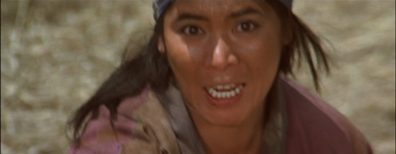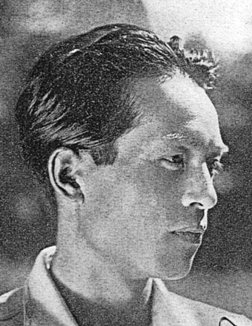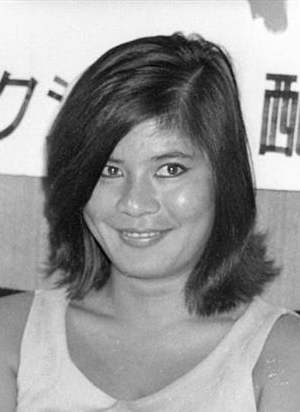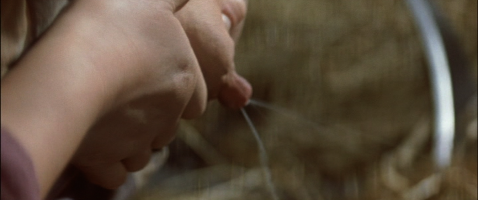Physical Address
304 North Cardinal St.
Dorchester Center, MA 02124

Other titles: Miyamoto Musashi VI, Death Match; Swords of Doom; Battle of Life or Death; Serious Game (alternative English titles); Duel with Real Swords, Real Sword Fight (literal English titles); Duel à mort [Duel to the Death] (alternate French title); Espadas da Morte [Swords of Death] (alternate Portuguese title)
| Production Company | Toho |
| Scenarist | Itō Daisuke |
| Source | Yoshikawa Eiji (novel) |
| Cinematographer | Kuroda Tokuzo |
| Production Designer | Chūko Satoru |
| Music | Kosugi Taiichirō |
| Performers | Nakamura Kinnosuke [Yorozuya Kinnosuke] (Miyamoto Musashi); Mikuni Rentarō (Shishido Baiken); Okiyama Hideko (Omaki, Baiken’s wife); Matsuyama Teruo, Tanaka Hiroshi, Iwamoto Kōji [as Wakamoto Hironobu] (members of Baiken’s gang) |
| Status | Extant |
| Photography | Color (Fujicolor) |
| Format | 35mm |
| Ratio | 2.35 : 1 (Tohoscope) |
| English Subtitles | Yes |
| Release Dates | February 20, 1971 (Japan, posthumous); September 7, 1971 (USA); July 18, 1972 (Taormina Film Festival) |
| Length | 75 minutes (allegedly unfinished)1 |
| Awards/Festivals/Retrospective Screenings | Kinema Junpo Best Ten: #6; Taormina Film Festival (1972): Winner, Golden Charybdis; Lumière 2014 (Grand Lyon Film Festival) |
Note: This film, Uchida’s final work and only posthumously-released one, was based on the same novel and stars the same actor (Nakamura Kinnosuke) playing the same character as in Uchida’s five-part Miyamoto Musashi series (1961-1965) for Toei. However, because this was filmed for a different studio with a different creative team, because it doesn’t follow chronologically after the end of the final film in the original series and, above all, because its style, tone and themes are unique, I consider this work to be a totally separate film from the earlier series, rather than a continuation of it. For all these reasons, I reject Miyamoto Musashi VI as a valid English-language title for this work. In any case, Swords of Death is a (somewhat) more accurate translation.
Note also that although this is Uchida’s last film, this post will not be the final review to be posted on this website, as the author from the beginning has posted and will continue to post reviews of the director’s films in non-chronological order.
In a prologue, a narrator mentions that Miyamoto Musashi fought more than 60 duels without being defeated, but though he was famous because of his “two-sword” style of dueling, the narrator notes that in none of his writings does he mention using two swords. There are then shown several recreations of duels Musashi fought – including his famous one with his most formidable opponent, Sasaki Kojirō – before the main title credits.2
Musashi, walking through a mist-covered field, comes upon a hut whose owner is the blacksmith and bandit Shishido Baiken.3 Musashi has heard of Baiken’s skill with the kusari-gama (the sickle-and-chain combination weapon), and wants to learn from him. Entering the dwelling, he sees a woman, Omaki, Baiken’s wife, in the center of the room, whirling a small ball and chain around her head, though she stands only a few feet from her infant child, Taroji. (It is later revealed that she does this to accustom the baby to physical danger and loud sounds, so he will feel no fear as he grows up.) Seeing Musashi at the door, she invites him in and then goes to a separate room to feed the baby.
Baiken, returning from his travels, greets his bandit gang, who are practicing fighting in the woods. Baiken reveals to them that the Western and Eastern armies – the latter commanded by the daimyo Tokugawa Ieyasu – are at a stalemate. Thus a new war is not imminent, so there’s not yet any opportunity for them to make money from fighting.4
Baiken returns to his house and greets his beloved wife, stopping to pray at the graves of family members before going inside. He’s surprised to see Musashi, who says he wants to learn Yaegaki technique from him. When Omaki informs Baiken that the samurai had already seen her execute the “three forms” in front of the baby, Baiken tells Musashi that there’s nothing else to learn – unless they fight a duel with “naked blades” (“shinken shōbu”), which Baiken is certain the stranger would lose. But Musashi is adamant, and Baiken agrees to instruct him, though only by talking, not dueling. Baiken goes outside the hut to confer with Omaki, where they plot to get Musashi drunk and then kill and rob him in his sleep.
Back in the hut, Baiken invites the samurai to fight alongside him and his gang in the coming wars, an offer Miyamoto declines. In the course of the conversation, Musashi reveals that his real given name is Takezo. Baiken recognizes “Takezo” as the name of the man who killed his wife’s brother at the Battle of Sekigahara, at which Baiken had also fought. Baiken then speaks alone with Omaki, and together they plot to gather his gang to kill the samurai before dawn to revenge her brother’s death. Omaki rides away on her horse, ostensibly to buy more sake, but actually to notify the gang of this plan.
During the night, Musashi awakens and notices a draft coming from the open front door as Baiken looks in on him. Omaki, pretending to put more wood on the fire, determines to her satisfaction that the samurai is asleep, though he’s actually only feigning. Baiken gathers his gang in the yard outside and instructs them to kill the samurai as soon as he emerges from the house, if he somehow survives Baiken’s attack. Baiken then enters and with his chain tries to kill Musashi with a single blow, only to discover that he’s no longer lying beneath the blanket on the floor.
Musashi reappears among Baiken and his gang in the yard and castigates him for trying to murder a guest in his home. When the gang attacks him, Musashi quickly kills all eight of Baiken’s henchmen, leaving the blacksmith and his wife as his only remaining adversaries.
With Omaki carrying the baby Taroji on her back, the couple together slowly approach Miyamoto as he stands on open ground, both of them whirling their ball and chain weapons around their heads, so he can’t approach them with his sword. Suddenly, however, Musashi steals the baby from its mother and sits down on a hill with the child in his lap.
Omaki pleads with her husband not to attack Musashi, which would put Taroji’s life in danger. Musashi suggests a deal to Baiken whereby he would return the boy to him if he’d drop his chain and sickle first. Baiken, who suspects a trick, refuses the deal.
Omaki tells Baiken that her breasts have become swollen with milk. She moves into the tall grass to empty her breast and relieve this pressure. Musashi throws an empty can at her feet and instructs her to fill it with her milk and throw the can back at him, so that he, Musashi, can feed the hungry baby. She does as he instructs. Baiken, however, tries to stop her from helping Miyamoto.
When she asks her husband if he has no pity for his son, he reminds her of their obligation to avenge her dead brother. Omaki begs him to forget the dead, insisting that the only thing that matters is the life of their child. Baiken accuses her of betraying him, reminding her of his men who were just killed by Musashi, and in his anger his face appears distorted, like a demon’s.
He tells the samurai that he is willing to sacrifice his son’s life, but that he, Musashi, will die with the child. When Baiken hurls his chain at Musashi, however, Omaki casts her own chain towards his at the same instant, ensnaring it. The blacksmith, enraged, binds his wife’s ankles and hands and ties her to a stake in the ground, then runs after the escaping Musashi.
The samurai, in an open clearing, places Taroji on the ground and the two men face off against each other with the baby between them. As Baiken flings his chain at Musashi, the samurai raises the scabbard of his sword so that the chain winds around it. He then buries the scabbard in the ground like a stake, forcing his enemy to approach him. When Baiken is close enough, Musashi steals his sword and wounds him in the hand with it, so that he’s forced to drop the chain weapon. Thus, the samurai possesses two swords and the chain and the blacksmith has no weapon. Musashi demands that Baiken leave, and he does.
Carrying Taroji, Musashi approaches the place where Omaki is still tied to the ground and begs her forgiveness. Without untying her, he places the baby on the ground at some distance from its mother, telling the child to go to her. He is just about to leave when Baiken returns on horseback, riding in a circle around Miyamoto, torching the underbrush all around him. Soon, there is a large circle of fire around Musashi, Omaki and Taroji. When Baiken asks him where the child is, he points to Taroji, and the man is horrified at the danger he has put his own son in. He rides to the baby, picks it up and approaches his wife, placing the baby on the ground a few feet away from her.
When Musashi attempts to leave the field, Baiken blocks his way. The blacksmith thanks the samurai for sparing his son’s life, but insists that they still have a duel to fight. He demands of him that he give up his sword – the same sword that killed his eight men – so he can bury it with their bodies. Miyamoto throws the chain that he had earlier taken back at him, calling it a weapon unworthy of a samurai, and accuses him of throwing away his own life. The blacksmith in turn accuses the samurai of insulting him and demands that he draw his sword.
Musashi draws both swords. He silently reminds himself in a voiceover that a sword can have two purposes, to take life or to defend life: the Sword of Death and the Sword of Life. A title card is then superimposed on the screen against the raging flames: “The Sword of Death and the Sword of Life: In the end, the sword is only violence.” The film concludes with a closeup of the smiling face of the child, Taroji.

Itō Daisuke was a major director and screenwriter who, like his almost-exact contemporary and friend Uchida, began his career in the early 1920s during the silent era. Though he made other kinds of movies, Itō is associated chiefly with jidai-geki and meiji-mono (Meiji-period) films. Working at Nikkatsu at roughly the same time as Uchida in the prewar era, he created extremely dynamic, technically innovative period films, such as the three-part A Diary of Chūji’s Travels (Chūji tabi nikki, 1927), which exists today only in fragments, and the surviving Jirōkichi the Rat (Oatsurae Jirōkichi koshi, 1931). The rebellious heroes of these movies are thought to have reflected their creator’s left-wing politics. However, during the same period, Itō had also written the script for Uchida’s (allegedly) right-wing propaganda film, Asia Cries Out (Sakebu Ajia, 1933, lost). In the postwar era, he made such period films as Five Men of Edo (Oedo go-nin otoko, 1951), Conspirator (Hangyakuji, 1961) and his final film as director, Bakamatsu (1970), the last two starring the popular young star Nakamura Kinnosuke, who also stars in this film. In the mid-1950s, he helped Uchida achieve his successful comeback by agreeing to serve as technical advisor (alongside Ozu Yasujirō and Shimizu Hiroshi) during the production of A Bloody Spear at Mount Fuji. Just as Swords of Death was Uchida’s final film, the movie was also to be the last project for Itō, who was credited as sole scriptwriter. He died in 1981 at age 82.

Okiyama Hideko had a brief but memorable acting career. She made her film debut in 1968, while still in her early twenties, as a mentally-challenged but very erotic native shamaness in Imamura Shohei’s The Profound Desire of the Gods (Kamigami no Fukaki Yokubo), which was chosen by critics as Best Film in that year’s Kinema Junpo poll. For international audiences, her best-known performance can be found in Kurosawa Akira’s Dodes’ka-den (Dodesukaden, 1970), in which she portrayed one of two neighbors, both wives of constantly drunken working-class men, who decide to swap husbands. Her final role was as a mysterious woman in Suzuki Seijun’s acclaimed 1981 film Heat-Shimmer Theater (Kagero-za). She was also a professional singer who recorded jazz standards. She died in 2011 at age 65.
Uchida had finally broken for good with Toei over cuts the studio had forced him to make to A Fugitive from the Past, which drastically shortened the running time of his epic masterpiece.5 After making one more movie for Toei, Hishakaku and Kiratsune: A Tale of Two Yakuza (1968), the now-freelance director was then hired by Toho, a studio for which he had never worked before, to make yet another installment of the Musashi saga.6 This must have been perceived by executives at Toei as a deliberate poke in the eye, particularly as Uchida’s five-part Musashi series had been such a great success for them.
During the making of the film, Uchida was, quite literally, dying. (It’s not clear whether Toho’s bosses knew this or not.) Never in great health after his return from China in 1953 at the age of fifty-five, he had worked almost relentlessly ever since. Thus, when he developed both stomach cancer and tuberculosis, his frail body couldn’t fight his illnesses.
Yet he was still, typically, fiercely determined to complete this last picture. He abandoned his long-suffering wife and family, moving out of his house and into an apartment in the city to work alone. (He is said to have remarked bitterly at this time that he denied a happy ending not only to his films, but to his own life.) As if that weren’t enough, he suffered a heart attack on April 28, 1970. It’s alleged by film scholar Stuart Galbraith IV that, fearing that the turning of the season would cause the location at which he had been filming to change to the point that matching shots would be impossible, Uchida literally rose from his deathbed in mid-May to finish the shooting in time.7 It’s also been claimed that an editing machine was brought into his hospital room so he could personally edit footage whenever he was strong enough to do so.8

Uchida seems to have gone out of his way to make the film appear as contemporary as possible. This is one period film that definitely doesn’t suggest a 1930s and even a 1950s retro jidai-geki. Striking stylistic changes include the director’s judicious use of the zoom lens and a more mobile camera than usual, particularly during the outdoor confrontation scenes between Musashi and the blacksmith and his wife. Most startlingly, and most reflective of the increasingly permissive times, there appears for the first time in an Uchida film shots of a naked breast… including some representing the character of Omaki lactating. (Uchida probably used a body double for these scenes.) At the very least, this development demonstrates the willingness of Uchida, by now an old man with half a century’s filmmaking experience under his belt, to adapt to changing times.
In his final months, knowing he had very little time left, Uchida decided to distribute virtually all of his remaining assets to his wife and friends. Thus, at the time of his death, according to Galbraith, his entire estate was valued at the equivalent of only six-and-a-half US dollars.9
As far as I know, this was the only Uchida film ever given a contemporary theatrical release in New York (at the Bijou Cinema, September 1971), where it was praised by New York Times critic Roger Greenspun.10 Toho also entered the film in the 1972 Taormina International Film Festival, where it won the Golden Charybdis – the only foreign film festival award Uchida was ever to receive… though he had died two years prior to winning it.11
(Continued on page 2)